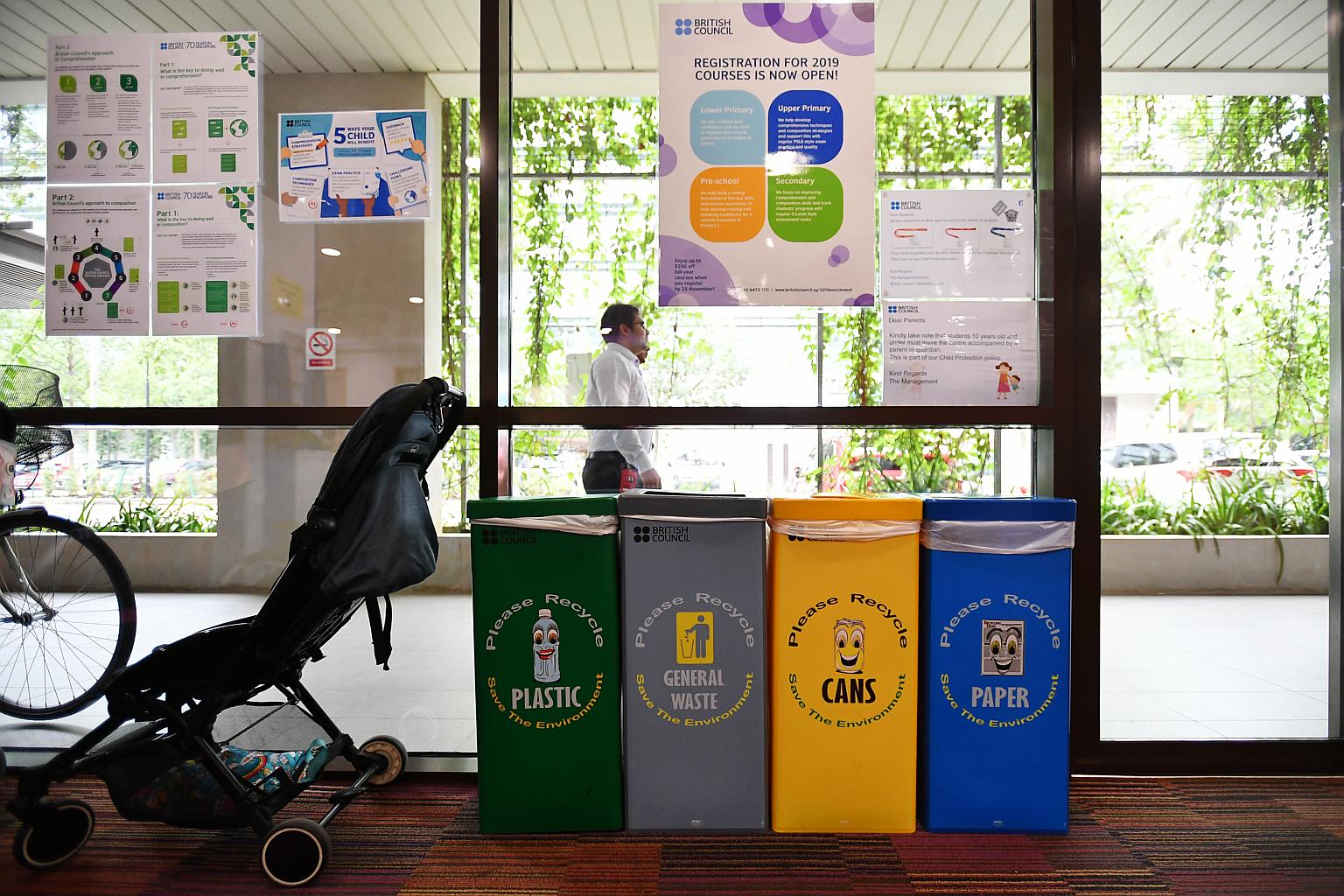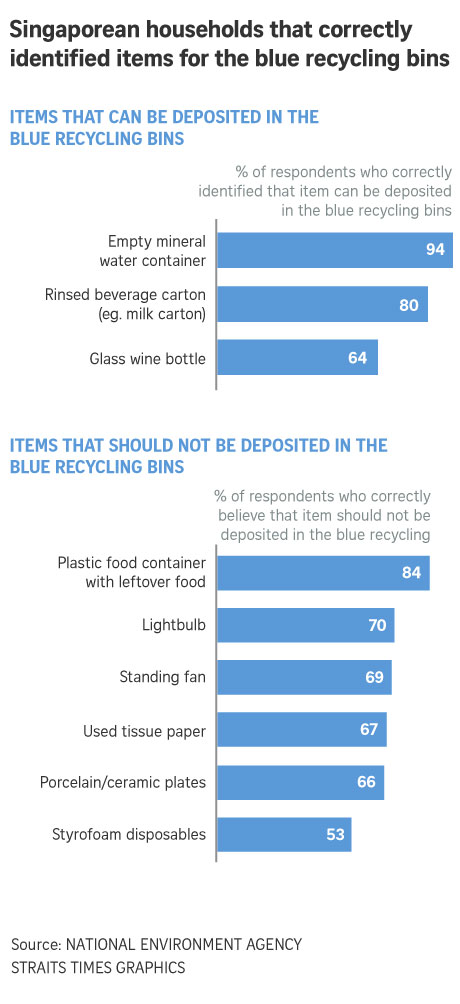6 in 10 S'porean households recycle regularly, though misconceptions about the process remain: Surveys
Sign up now: Get ST's newsletters delivered to your inbox

According to the survey, the top category of recycled items were paper materials such as newspapers, magazines, junk mail, brochures and writing paper.
ST PHOTO: LIM YAOHUI
Ng Huiwen, Vanessa Liu
Follow topic:
SINGAPORE - About six in 10 Singaporean households recycle regularly, with items such as paper materials and clothes among the most common items being recycled, according to two recent surveys.
But the surveys also found that more can be done to help Singaporeans identify items that should not be thrown into a recycling bin, especially those which could contaminate the entire collection.
The Ministry of the Environment and Water Resources (MEWR) and the National Environment Agency (NEA) surveyed more than 5,000 Singaporean households between June last year and February.
The findings of both surveys, which covered different aspects of household recycling and were carried out face-to-face, were released by the two agencies in a joint statement on Monday (April 29).
Among the key findings released was that 56 per cent of "regular recyclers" surveyed use the blue recycling bins at least once a week.
The top category of recycled items was paper materials such as newspapers, magazines, junk mail, brochures and writing paper.
While these items are suitable for the blue recycling bins, they are more likely to be contaminated by food and liquids.
Clothes, shoes and bags were also commonly recycled, though the agencies noted that these items were not suitable to be left in the blue recycling bins.
Other top items include plastic drink bottles, aluminium cans and glass beer or wine bottles, which should be emptied and rinsed clean when possible so that they do not contaminate the bin and attract pests.
MEWR's survey on household recycling behaviours, attitudes and knowledge found that convenience was one of the most commonly cited reasons for recycling regularly.
Others were motivated by encouragement from the Government, concerns about being wasteful and the feeling that one should match others' recycling efforts.
The most common reason for not recycling was having "too few items to recycle".
Other common reasons given by respondents for not recycling were that they were too busy or tired, or had a lack of space to collect recyclables in their home.
Households that did not recycle were found to have the perception that recycling was inconvenient and secondary to their daily routine.
When asked to classify recyclables and non-recyclables, the respondents in both surveys were able to correctly do so for an average of seven out of 10 items.
However, a significant proportion of them mistook items that should be disposed of or reused as recyclables.
These items include contaminants that should be thrown away such as soiled paper food packaging, tissue paper and styrofoam, as well as ones that should be donated instead, like soft toys, bags and shoes.
These wrongly recycled items contribute to the high contamination rate of the recyclables collected from the blue recycling bins, the agencies said. These contaminated recyclables become unsuitable for recycling.
Another misconception among 60 per cent of Singaporean households was that recyclables had to be sorted by their type before they can be dropped into the blue recycling bins or recycling chutes.
The agencies said that this correlates with another finding that 43 per cent of Singaporean households were unaware that recyclables deposited into these bins were sorted at material recovery facilities after they are collected.
"There is no need to pre-sort items that are deposited into the blue recycling bins, because the contents of the blue recycling bins will be transported to the material recovery facilities where the sorting takes place," the statement said.
NEA's survey, which is conducted biennially, is aimed broadly at households' experiences with recycling collection services and infrastructure in their homes.
The MEWR survey was commissioned for the Year Towards Zero Waste, and complements NEA's survey by delving deeper into specific areas of interest.
MEWR and NEA said that there are efforts underway to make recycling more convenient for households here.
For instance, all new public housing developments launched since 2014 have been fitted with dual chutes for refuse and recyclables.
This requirement has also been extended to buildings taller than four storeys in all new non-landed private residential developments since April last year.
The agencies said that these initiatives will make recycling more accessible for residents in apartments and in landed homes.
Other efforts include pilot trials to encourage in-home recycling in households so that it becomes part of Singaporeans' daily routine.
"We are also refreshing the design of the blue recycling bin labels to improve the presentation of information on recycling, to help more people recycle right," the agencies said. The new design is expected to be ready by this year.
The public can locate the nearest recycling bins and recyclables collection points at the NEA website, its social media accounts or its myENV mobile application.




